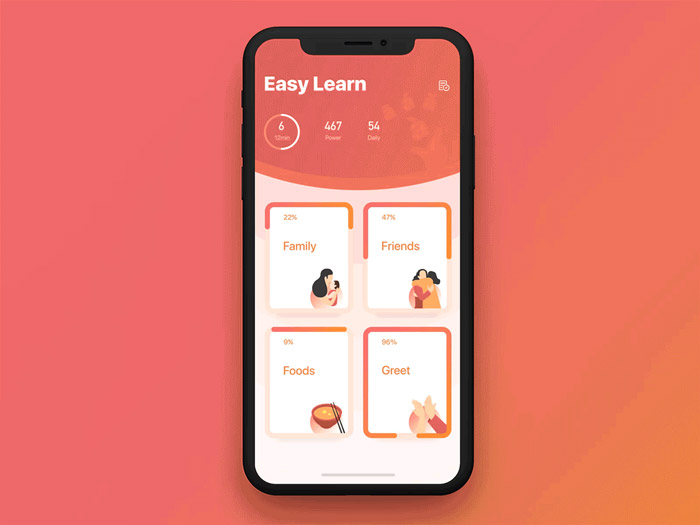- 首頁
- Blog
- Web Design Fundamentals: The Secret Behind Polished and Eye-Catching Layouts — Card-Based Design
Web Design Fundamentals: The Secret Behind Polished and Eye-Catching Layouts — Card-Based Design
2024 / 10 / 22
Have you ever wondered why some websites look refined despite their simplicity, while others appear cluttered and rough even with a fully packed layout?
The answer often lies in the layout structure.
Today, Arachne Group Limited will explore one of the most popular layout approaches—card-based design—to help your web design stand out and capture users’ attention.
Web Design Fundamentals: What Is Card-Based Design?

Card-based design involves dividing content or functional areas into multiple independent “cards” for information presentation and organization. Each card typically contains related content or features and is visually separated from others through spacing or linear dividers.
Overall, this design technique not only enhances visual aesthetics but also provides several key benefits:
1. Each card serves as an individual content element, improving clarity, readability, and overall content organization.
2. With defined boundaries—such as borders, shadows, or whitespace—cards remain visually distinct, helping users differentiate content effortlessly.
3. The high flexibility of card layouts allows designers to adjust card structure based on user habits and design goals to achieve optimal visual performance.
4. Designers can highlight key information by adjusting visual attributes such as color, size, or style, guiding user attention to essential content.
Types of Card-Based Design

Depending on visual presentation, card-based layouts generally fall into two categories: full-width cards and non-full-width cards, each with its own characteristics and use cases.
• Full-Width Cards
Full-width cards span the entire page width with no horizontal margins. This layout enhances spatial openness, draws attention to individual content blocks, and improves reading efficiency.
Features of Full-Width Cards:
* By removing left and right margins, these cards maximize display space, creating a strong visual impact.
* They strike a balance between minimalist list layouts and traditional card layouts, maintaining high interactivity while reducing visual noise for a cleaner, more unified interface.
• Non-Full-Width Cards
Non-full-width cards retain horizontal margins and do not occupy the full page width. This creates stronger visual hierarchy, improves content organization, and helps highlight key elements.
Features of Non-Full-Width Cards:
* They often feature rounded corners, providing a softer and more comfortable visual experience.
* With shadows and surrounding whitespace, these cards create depth and layered structure, making content more distinguishable and visually engaging.
* Their adaptability allows designers to customize card arrangements based on functional requirements and user behavior across different use cases.
Choosing Between Full-Width and Non-Full-Width Cards

Your selection should align with your design objectives and content structure. Arachne Group Limited offers three recommendations:
1. If the card contains clear internal separators—such as list items or paragraph divisions—non-full-width cards improve hierarchy and reading efficiency.
2. When a card includes multiple elements (text, images, videos) and requires substantial vertical space, non-full-width cards provide clearer boundaries, helping users process information more easily.
3. If your design encourages horizontal browsing or swipe interactions, non-full-width cards are preferred, as their spacing naturally signals horizontal navigation.
Conclusion: When Is Card-Based Design Most Effective?
Ideal for Mixed Media Layouts
Given its clarity, simplicity, and efficiency, card-based design is particularly suited for layouts combining text and imagery. It unifies diverse media types on one interface while maintaining visual balance and consistency.
Through thoughtful spatial arrangement, card layouts harmonize the relationship between text and visuals, balancing their visual weight. In scenarios demanding the presentation of varied and rich content, card-based design stands out as both an effective and aesthetically appealing solution.
The answer often lies in the layout structure.
Today, Arachne Group Limited will explore one of the most popular layout approaches—card-based design—to help your web design stand out and capture users’ attention.
Web Design Fundamentals: What Is Card-Based Design?

Card-based design involves dividing content or functional areas into multiple independent “cards” for information presentation and organization. Each card typically contains related content or features and is visually separated from others through spacing or linear dividers.
Overall, this design technique not only enhances visual aesthetics but also provides several key benefits:
1. Each card serves as an individual content element, improving clarity, readability, and overall content organization.
2. With defined boundaries—such as borders, shadows, or whitespace—cards remain visually distinct, helping users differentiate content effortlessly.
3. The high flexibility of card layouts allows designers to adjust card structure based on user habits and design goals to achieve optimal visual performance.
4. Designers can highlight key information by adjusting visual attributes such as color, size, or style, guiding user attention to essential content.
Types of Card-Based Design

Depending on visual presentation, card-based layouts generally fall into two categories: full-width cards and non-full-width cards, each with its own characteristics and use cases.
• Full-Width Cards
Full-width cards span the entire page width with no horizontal margins. This layout enhances spatial openness, draws attention to individual content blocks, and improves reading efficiency.
Features of Full-Width Cards:
* By removing left and right margins, these cards maximize display space, creating a strong visual impact.
* They strike a balance between minimalist list layouts and traditional card layouts, maintaining high interactivity while reducing visual noise for a cleaner, more unified interface.
• Non-Full-Width Cards
Non-full-width cards retain horizontal margins and do not occupy the full page width. This creates stronger visual hierarchy, improves content organization, and helps highlight key elements.
Features of Non-Full-Width Cards:
* They often feature rounded corners, providing a softer and more comfortable visual experience.
* With shadows and surrounding whitespace, these cards create depth and layered structure, making content more distinguishable and visually engaging.
* Their adaptability allows designers to customize card arrangements based on functional requirements and user behavior across different use cases.
Choosing Between Full-Width and Non-Full-Width Cards

Your selection should align with your design objectives and content structure. Arachne Group Limited offers three recommendations:
1. If the card contains clear internal separators—such as list items or paragraph divisions—non-full-width cards improve hierarchy and reading efficiency.
2. When a card includes multiple elements (text, images, videos) and requires substantial vertical space, non-full-width cards provide clearer boundaries, helping users process information more easily.
3. If your design encourages horizontal browsing or swipe interactions, non-full-width cards are preferred, as their spacing naturally signals horizontal navigation.
Conclusion: When Is Card-Based Design Most Effective?
Ideal for Mixed Media Layouts
Given its clarity, simplicity, and efficiency, card-based design is particularly suited for layouts combining text and imagery. It unifies diverse media types on one interface while maintaining visual balance and consistency.
Through thoughtful spatial arrangement, card layouts harmonize the relationship between text and visuals, balancing their visual weight. In scenarios demanding the presentation of varied and rich content, card-based design stands out as both an effective and aesthetically appealing solution.
MORE BLOG
-
Web Development + Digital Marketing: Crafting Thanksgiving & Black Friday Campaigns That Drive Record Profits for Businesses
2025/11/21 As your professional partner in web development and digital marketing, Arachne Group Limited understands that a successful holiday campaign is far more than just offering "discounts." -
What Are Web Development and Web Design? The Two Pillars of Building Successful Web Solutions
2025/11/19 Transforming it into a functional, live website requires a series of complex conversion processes, including writing code, setting up databases, and building backend functionalities. -
How to Create a Pet Supplies E-commerce Website? Master 3 Web Design & 3 Online Promotion Strategies
2025/11/11 Mastering practical skills is the key to success! In this article, Arachne Group Limited will guide pet brand merchants step-by-step, helping you build an online shopping paradise where pet owners love to browse and are happy to make purchases.
















